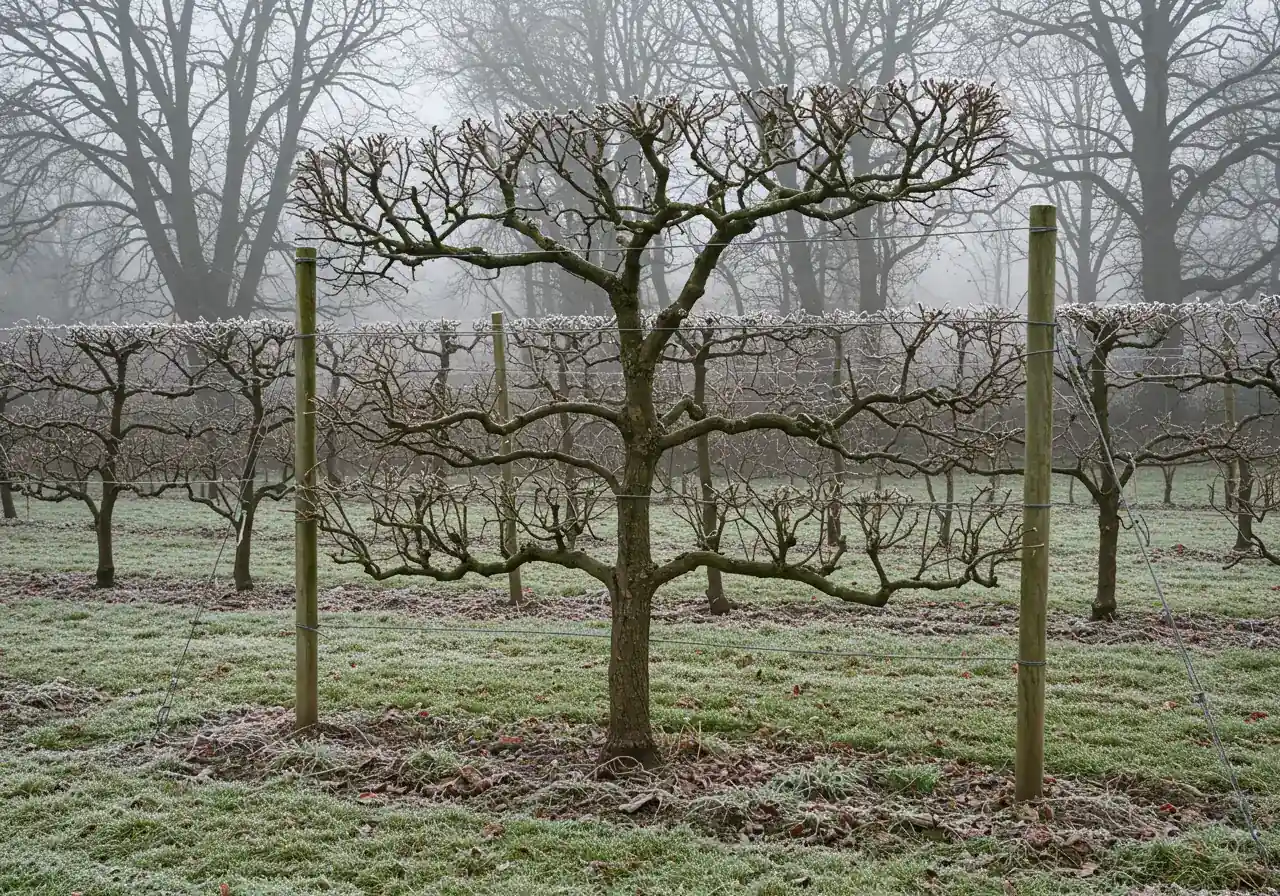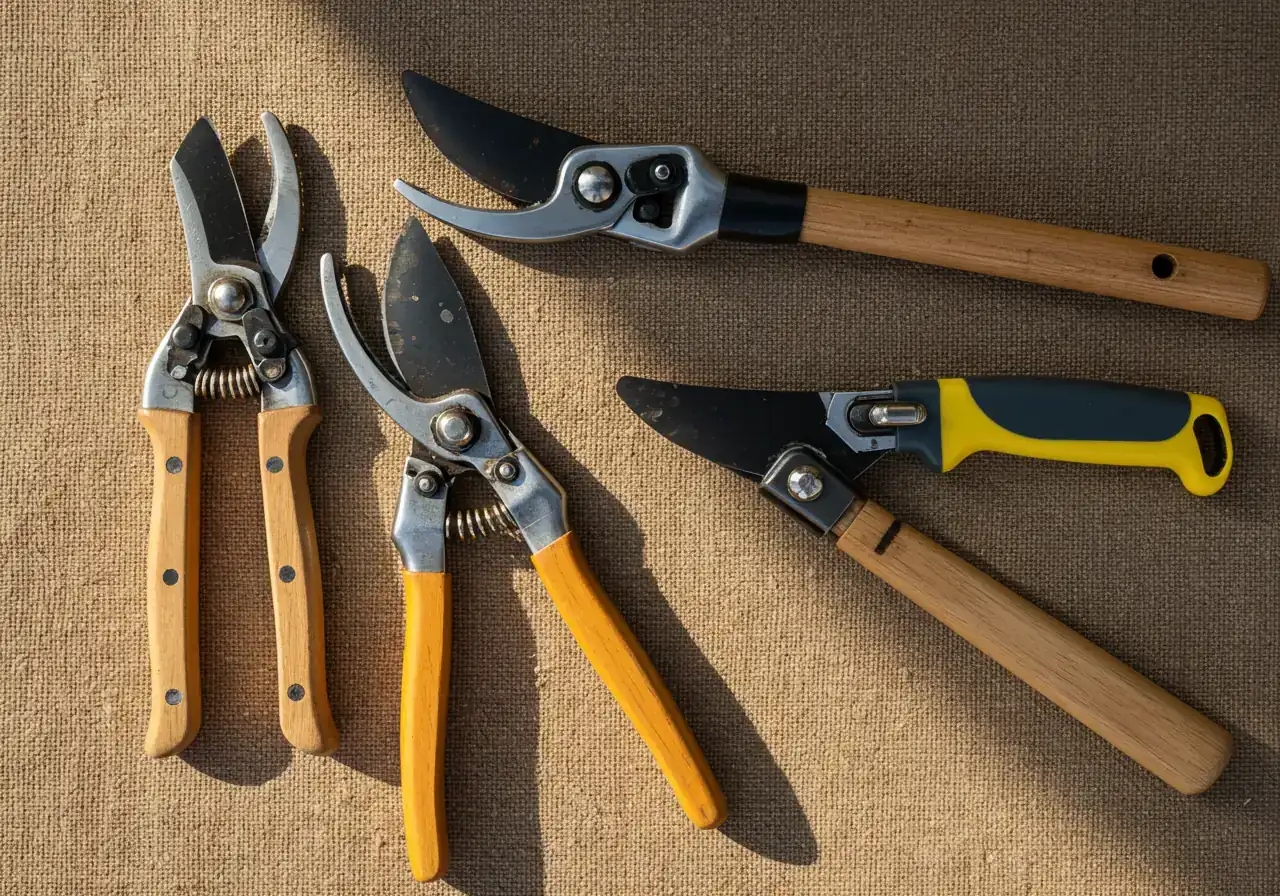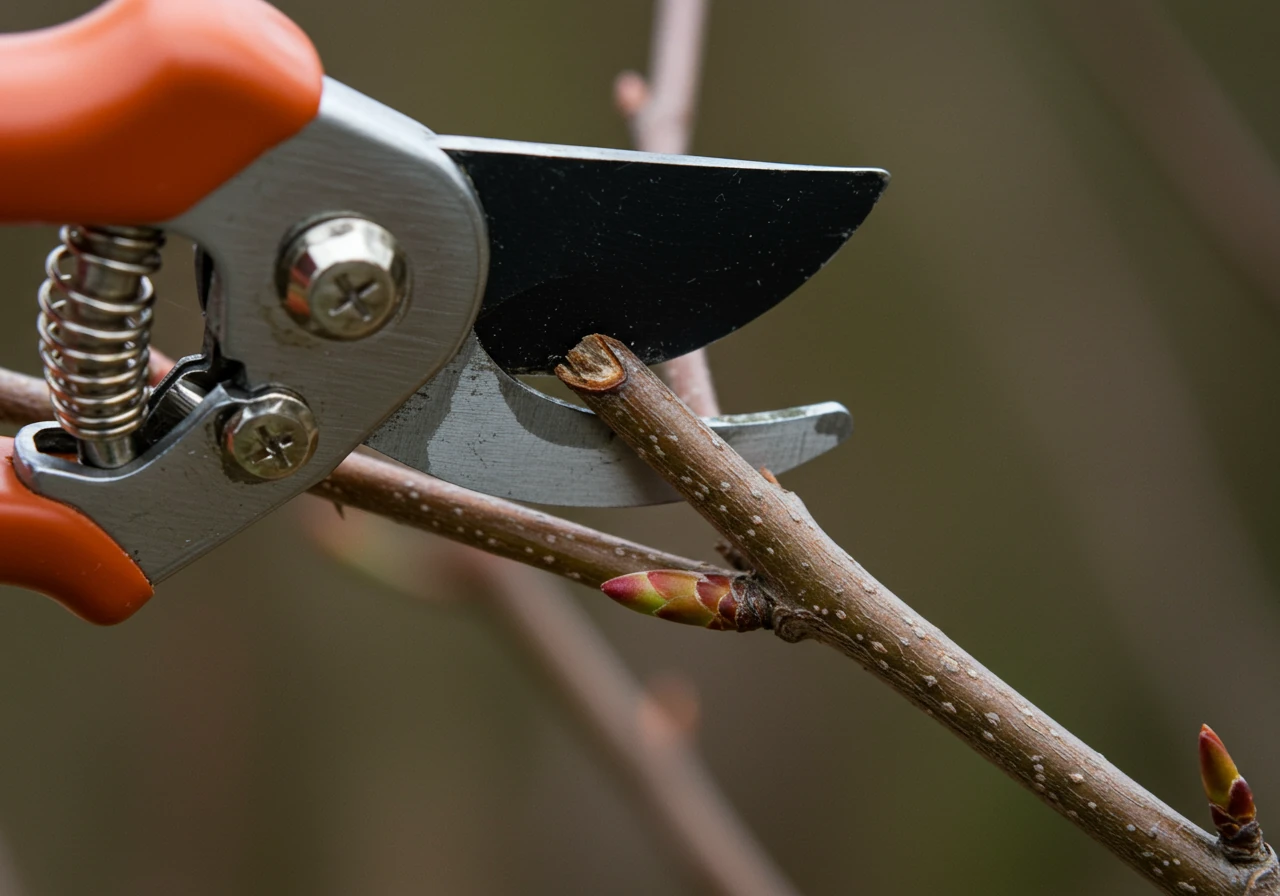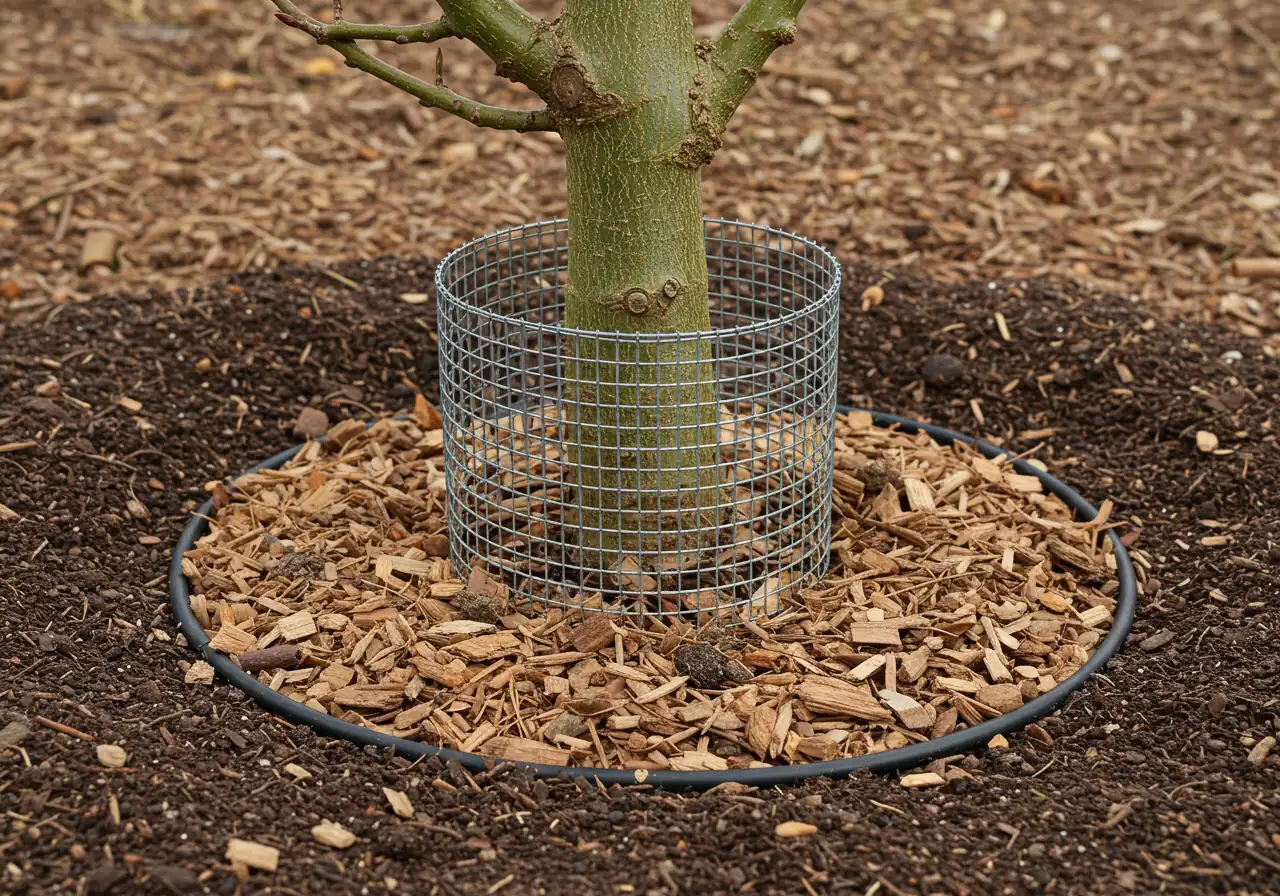Osgoode Homes: Master Espalier Pruning Before Winter
Quick Guide: Winter Espalier Pruning Essentials
- Prune espalier trees in late fall/early winter (after leaf drop, before deep freeze).
- Focus on removing dead, damaged, diseased wood, plus watersprouts and crossing branches.
- Use sharp, clean bypass pruners, loppers, and saws for precise cuts.
- Apply mulch around the base (donut shape, not touching trunk) for root protection.
- Check and secure support wires and ties.
- Protect trunks from critters with guards or mesh.
- Clean up all pruned debris thoroughly.
Need expert help preparing your Osgoode garden for winter? Request your free quote today!
Introduction: Espalier Elegance in Osgoode – Winter Prep is Key!

Well hello there, fellow Osgoode green thumbs and aspiring garden artists! Ever gaze across a neighbour's fence, perhaps over towards Manotick way, and spot a tree growing flat against a wall or fence, looking like something straight out of a fancy European gardening magazine? That, my friends, is the magic of espalier – the art of training trees into stunning, two-dimensional forms. It’s a brilliant landscaping technique, perfect for adding a touch of elegance, maximizing sunshine, and even growing fruit trees in spaces where you thought you couldn't fit a sapling, let alone a whole tree!
Now, we all know living here in the beautiful Ottawa region means embracing four distinct seasons, including a winter that, let's be honest, likes to make an entrance (and then overstay its welcome just a tad). While your espaliered trees look fantastic basking in the summer sun, keeping them healthy through our frosty winters requires a little know-how. Proper winter preparation, especially the right kind of pruning at the right time, is absolutely crucial. Think of it as giving your living artwork a sturdy winter coat – neglecting it could mean damage or disappointment come spring. Don't worry, it's not complicated, but it is key to ensuring your espalier beauty thrives year after year in Osgoode! Explore our approach to garden care and see how we prioritize plant health.
What in the Wires is Espalier? (And Why Your Ottawa Garden Will Thank You)
Alright, let's talk about this intriguing word: espalier (pronounced ess-PAL-yay or ess-PAL-ee-er, potato, potahto!). Heard it whispered on the garden breeze, maybe saw it jazzing up a fence line somewhere near Nepean, and wondered what horticultural magic was afoot? Don't worry, it’s not that complicated, and it’s definitely not just for fancy French chateaus!
Think of espalier as basically teaching a tree or shrub to grow flat. Yep, flat! Instead of growing outwards in all directions like a typical tree, you gently guide its branches to grow along a support structure – often wires stretched between posts, or directly against a wall or sturdy fence. It's like plant yoga or creating a living piece of art for your garden. The "wires" in the name often literally refer to the support system used in this landscaping technique.
So, why would you want to do this fancy footwork with your trees here in Ottawa? Oh, let us count the ways your garden might just send you a thank-you note:
- Space Saver Supreme: This is a huge win for many Ottawa homeowners. Got a narrow side yard in Barrhaven? A small urban garden? Espalier lets you grow fruit trees (apples and pears are classics!) or beautiful flowering trees where you thought you only had room for a skinny shrub. It makes the most of vertical space. Check out some potential garden transformations for ideas.
- Sun Seekers Rejoice: By training branches flat against a sunny wall (especially a south-facing one), you maximize sunlight exposure. That wall also absorbs heat during the day and radiates it back at night, creating a cozy microclimate. This can be a game-changer for ripening fruit in our sometimes-short Ottawa growing season!
- Easier Tree Care & Harvest: Forget teetering on ladders! With espalier, pruning, checking for pests, and harvesting fruit are usually much easier because everything is within arm's reach. Careful, targeted pruning is key to maintaining the shape. This isn't your average hack-job; it's more structured than typical Osgoode fall tree pruning before winter hits, requiring regular attention during the growing season and often dormant season touch-ups too.
- Stunning Garden Style: Let’s be honest, espalier looks amazing. It adds structure, elegance, and a unique architectural element to your landscape. It can serve as a focal point, divide garden 'rooms', or soften a blank wall. Imagine the elegant lines of your espalier complementing a stunning display achieved through thoughtful Osgoode flower bed design for vibrant colour.
- Happy Plants: Good air circulation is important for preventing fungal diseases, and the open structure of an espalier can help with that. Of course, like any plant, it needs the right foundation. Even with the challenges of heavy soil sometimes found nearby, learning about Osgoode clay soil garden care and fall tips can help your espalier establish strong roots. And don't forget consistent watering – just like ensuring your Osgoode sprinkler system winterization and blow out is done before the freeze protects your irrigation investment, regular watering keeps your living art thriving. Need help with soil? Consider our soil preparation services.
Quick Comparison: Traditional Tree vs. Espalier
| Feature | Traditional Tree | Espalier Tree |
|---|---|---|
| Space | Needs significant ground area | Minimal footprint, uses vertical space |
| Sunlight | Natural canopy, potential self-shading | Maximizes sun exposure on flat plane |
| Pruning | Less frequent, may need ladders | More frequent, specific, easy access |
| Harvesting | Can be hard to reach | Usually easy, within reach |
| Look & Feel | Natural, full, provides shade | Formal, architectural, artistic |
| Best For | Larger yards, shade needed | Small spaces, walls/fences, focal points |
Espalier isn't an overnight transformation; it requires patience, consistent pruning, and a bit of planning. But the payoff is a unique, productive, and beautiful addition to your Ottawa garden. While rewarding, it does take commitment. If you're intrigued but unsure where to start, or need help with the ongoing maintenance, remember that professional help is available. Exploring our full range of landscaping services can give you an idea of how we can assist with projects big and small, including garden maintenance plans.
Bracing for the Big Chill: Why Pre-Winter Pruning is Non-Negotiable in Zone 5a
Okay, let's get those espalier trees tucked in safely for their winter nap!

Alright neighbours, let's chat about winter in Ottawa. We love our city, but let's be real – our Zone 5a climate throws some serious curveballs at our gardens. That "big chill" isn't just a suggestion; it's a full-blown Canadian winter reality involving freezing temperatures, heavy snow, and those delightful freeze-thaw cycles that keep our plants guessing. This is especially true for our carefully trained espalier trees. They look elegant, but that structure needs a little extra TLC before winter hits, making pre-winter pruning absolutely essential. Think of it as sending your tree to bed tidy and strong, ready to dream of spring blossoms.
So, why prune *before* the deep freeze? Isn't spring the usual pruning time?
Great question! While major structural pruning often happens in late winter/early spring, a careful pre-winter cleanup, once your tree is dormant, is critical for survival here in the Ottawa valley. Here’s the lowdown:
- Embracing the Dormant Dream: As the days shorten and temperatures drop, your deciduous trees (including most popular espalier choices like apples and pears) enter dormancy. This is like a deep sleep where growth stops, and the tree conserves energy. Pruning *after* the leaves have dropped but *before* the ground is frozen solid and the *really* harsh cold arrives (usually late fall/early winter) is ideal. The tree is less stressed by pruning cuts when it's "asleep," and it minimizes the risk of stimulating new growth that would just get zapped by the cold.
- Snow Load Sabotage Prevention: Remember those heavy, wet snowfalls we sometimes get? An espalier's flat structure, especially with extra, unnecessary branches, can act like a sail or shelf, catching snow and ice. This weight can easily snap branches or damage the main framework you've worked so hard to establish. Pre-winter pruning removes weak, awkwardly positioned, or excess branches, streamlining the structure to better shed snow and withstand winter winds. It’s like giving your tree a more aerodynamic winter profile!
- Disease and Pest Patrol: Dangling dead or diseased branches are like open invitations for pests and diseases to overwinter. Trimming these away *before* winter reduces the chances of problems festering under the snow and emerging with a vengeance in spring. Think of it as preventative tree care. This kind of tidying up is a key part of comprehensive fall garden preparation, whether you're doing a major Osgoode yard cleanup service or just focusing on your prized espalier.
- Surviving the Freeze-Thaw Fandango: Ottawa winters rarely stay consistently frozen. We get thaws followed by hard freezes. These cycles can be tough on plants, causing bark splitting or damaging vulnerable buds. Removing damaged or weak wood reduces the potential entry points for frost damage and helps the tree manage these fluctuations better.
- Focusing Energy for Spring: By removing unnecessary bits now, you help the tree direct its stored energy towards surviving the winter in its roots and essential buds. Come spring, it can focus its resources on producing healthy new growth and, hopefully, lots of flowers or fruit, instead of trying to support weak or damaged limbs. This smart energy management contributes to overall landscape health.
Key Takeaway: Pre-Winter Pruning Benefits
Pruning dormant espalier trees before harsh Ottawa winter reduces stress, prevents snow/ice damage, minimizes overwintering pests/diseases, mitigates freeze-thaw issues, and conserves energy for spring growth.
Tips for Your Pre-Winter Espalier Trim:
- Timing is Key: Wait for dormancy (leaves dropped, colder temps) but act before the harshest cold (late October to early December is often the window in Ottawa).
- Tools: Use clean, sharp bypass pruners or loppers. Clean cuts heal better.
- What to Snip: Focus on the 3 D's: Dead, Damaged, and Diseased wood. Also remove any branches rubbing against each other or the support wires, and any overly vigorous upright shoots (water sprouts) that disrupt the flat shape.
- Don't Go Crazy: This isn't the time for major reshaping. It's a maintenance trim to prepare for winter stress. Heavy structural pruning is best left for late winter/early spring.
- Consider Your Soil: If you're gardening in areas with heavier clay soil, like some parts of Greely or Metcalfe, good drainage is crucial for winter survival. Ensuring your tree isn't sitting in frozen, waterlogged soil helps the roots survive. While pruning the top, remember healthy roots are the foundation. Proper fall cleanup, like that offered by a dedicated Metcalfe yard cleanup service, often includes leaf removal which can help prevent excessive moisture around the base.
Taking these steps is part of the rhythm of gardening in our region, much like folks in nearby Richmond or Kars are also busy preparing their plots for the cold months. It might seem like just another chore on the fall list, but this pre-winter prune is a crucial investment in the health and beauty of your espalier tree.
Neglecting this step can lead to broken branches, disease issues, and a stressed tree come springtime. Giving your espalier this careful attention now sets it up for success. After all the effort of training it, ensuring its winter resilience is paramount. It’s just one aspect of maintaining a beautiful property, alongside other seasonal tasks covered by professional Ottawa city yard cleanup service providers. Taking care of these details ensures your entire landscape, from the trees to the lawn, looks its best. Proper winter prep helps everything bounce back beautifully, contributing to the kind of healthy foundation needed for projects like achieving healthy sod installation for a lush lawn later on. If the task feels daunting, remember that exploring professional landscaping services is always an option to ensure the job is done right.
Choosing Your Weapons: Essential Tools for the Espalier Artist

Alright, aspiring espalier Picassos of Ottawa, let's talk gear! Just like any artist needs the right brushes, an espalier enthusiast needs the right tools. Don't worry, you don't need a shed full of complicated gadgets – just a few key players. Think of them as your trusty sidekicks in the quest for flat-growing fabulousness. Having the right tool for the job makes the process smoother, safer for you, and much healthier for your tree. Get these basics sorted, and you'll be snipping your way to espalier elegance in no time!
Your Espalier Toolkit Essentials:
- Bypass Pruners (Your Everyday Hero):
- What they are: Handheld clippers with scissor-like action for clean cuts. Avoid anvil types for live wood.
- Why you need them: For small branches (up to ~3/4 inch), trimming new growth, detailed shaping. Used frequently.
- Pro Tip: Invest in quality, comfortable pair. Good for regular garden maintenance.
- Loppers (The Big Guns... Sort Of):
- What they are: Long-handled bypass pruners for leverage on thicker branches (up to ~1.5 inches).
- Why you need them: Dormant season pruning, removing established wood, reaching higher branches.
- Pro Tip: Choose bypass style. Keep hinges oiled.
- Pruning Saw (When Things Get Serious):
- What it is: Small, often curved saw for branches too thick for loppers (over 1.5 inches).
- Why you need it: Removing larger dead/diseased limbs or making structural corrections.
- Pro Tip: Look for comfortable grip, replaceable blades. Folding saws are convenient.
- Gloves (Your Noble Hand Protectors):
- What they are: Sturdy gardening gloves.
- Why you need them: Protection from thorns, blisters, sap, insects. Improves grip.
- Pro Tip: Leather or reinforced synthetic offer good durability.
- Plant Ties (The Gentle Guides):
- What they are: Soft, flexible materials (garden twine, stretchy ties, old nylons). Avoid wire.
- Why you need them: Essential for training young branches to the support structure.
- Pro Tip: Tie loosely (figure-eight loop), check annually, adjust as branches thicken. Proper material selection matters here.
The Golden Rules: Sharpness & Sanitation (Seriously, Don't Skip This!)
Okay, listen up, because this is super important. Using dull or dirty tools is like trying to perform surgery with a rusty butter knife – it’s bad news for everyone involved, especially your poor tree!
- Sharpness is King:
- Why: Sharp blades make clean cuts that heal quickly, preventing disease entry. Less effort for you!
- How: Sharpen bypass pruners/loppers regularly (whetstone/file). Replace saw blades when dull. You can find resources on tool maintenance via organizations like Landscape Ontario.
- Sanitation is Queen:
- Why: Prevents spreading diseases between cuts or trees.
- How: Wipe blades with rubbing alcohol or 10% bleach solution between major cuts, especially after cutting diseased wood or moving between trees. Oil blades after cleaning if using bleach.
Tool Care = Happy Trees & Happy Gardener
Taking a few minutes after each gardening session to clean and properly store your tools makes a huge difference. Wipe off sap and dirt, sanitize, ensure they're dry, and maybe give metal parts a quick wipe with an oily rag. Store them somewhere dry to prevent rust. Treat your tools well, and they'll serve your landscaping artistry for years!
Proper pruning generates cuttings and debris. Remember that tidying up afterwards is part of the process. Whether you handle it yourself or utilize an efficient Ottawa yard cleanup service, keeping the area clean helps prevent pests and looks much better. For larger-scale tidying across your whole property, a comprehensive Ottawa property cleanup service can handle everything from leaf removal to branch disposal. Even in nearby communities, ensuring a clean slate is important; residents might rely on a dependable Marionville property cleanup service for similar seasonal tidiness. Keeping your tools sharp and your garden tidy contributes to the overall health and beauty of your space – it’s a satisfaction similar to seeing perfectly laid turf after healthy sod installation for a lush lawn. When your espalier looks fantastic thanks to your efforts and well-maintained tools, you'll thank yourself! Speaking of appreciation, feel free to explore our thank you page for past projects to see the kind of results that bring satisfaction.
The Pruning Masterclass: Your Step-by-Step Guide to Winter-Ready Espalier
Okay, let's roll up our sleeves (even though it might be chilly!) and dive into the fine art of getting your beautiful espalier ready for its winter slumber here in Ottawa. This isn't about giving your tree a major haircut; think of it more like a neat trim and tidy-up before the snow flies. Timing is important – we want to catch that sweet spot *after* the leaves have dropped and the tree is dormant, but *before* the ground freezes solid and we hit those bone-chilling deep winter temps. For most of us in the Osgoode to Winchester corridor, this window usually falls somewhere between late October and early December.

Ready to become an espalier pruning maestro? Grab your sharp, clean tools (remember our chat about weapons of choice?), maybe a thermos of something warm, and let's get started!
The Pruning Masterclass: Your Step-by-Step Guide
Step 1: Observe and Assess
Before cutting, step back and examine your espalier. Identify the main structure and note any dead, damaged, diseased, or out-of-place branches. Visualize the desired shape.
Step 2: Banish the Bad Boys (The 3 D's)
Prioritize tree health. Prune out Dead, Damaged, and Diseased wood, cutting back to healthy tissue. Remember to sanitize tools after cutting diseased sections!
Step 3: Clear the Clutter
Remove branches that are crossing or rubbing against each other or the support structure. Snip off branches growing directly towards the wall/fence.
Step 4: Taming the Rebels
Cut off vigorous upright shoots (watersprouts) flush with the main branch. Remove suckers growing from the base or roots.
Step 5: Refine the Form
Shorten side shoots (laterals) from the past summer's growth, leaving 2-3 buds each. Gently tie in any flexible new growth needed to fill gaps or extend the structure.
Step 6: Final Check & Cleanup!
Step back again. Ensure the tree looks tidy and ties are secure but not tight. Crucially, gather and remove *all* pruned branches and fallen leaves from the area.
This cleanup isn't just about looking tidy; it's vital for garden health. Pests and disease spores can happily overwinter in garden debris, waiting to pounce in the spring. Raking up and disposing of the cuttings is a non-negotiable part of the job. Whether you handle it yourself or bring in the cavalry, ensuring a clean space is key. A thorough fall cleanup can make all the difference, and if the task feels overwhelming alongside other autumn chores, utilizing an Ottawa yard cleanup service ensures everything is removed properly. For focused tidying around your prized plants, an expert Ottawa garden clean up service can meticulously clear away potential problems. Residents in surrounding areas understand this too; ensuring complete removal of debris is why engaging a reliable Metcalfe garden clean up service or even looking further afield towards a thorough Marionville garden clean up service is common practice for dedicated gardeners maintaining healthy, beautiful landscapes like those seen on our Google Business Profile.
And there you have it! Your espalier is now pruned, prepped, and ready to brave the Ottawa winter. Give yourself a pat on the back, clean your tools, and dream of spring blossoms!
Tuckered In: Winter Protection Strategies Beyond the Pruning Shears

Okay, pruning master, you’ve tidied up your espalier’s branches, sharpened your tools, and maybe even enjoyed that thermos of hot cocoa. High five! But wait, don't hang up your gardening gloves just yet. While that pre-winter prune is super important, there are a few more steps we can take here in the Ottawa region to ensure our flat, fabulous trees sleep soundly through the winter and wake up ready to impress next spring. Think of it as tucking them in with a warm blanket and checking the locks before the big freeze really settles in. This goes beyond the pruning shears and focuses on creating a safe haven against snow, ice, wind, and hungry critters.
Let's walk through some key winter protection strategies:
- Mulch: The Root Cozy
- Why: Insulates roots, regulates soil temperature, prevents freeze-thaw heaving, retains moisture.
- How: Apply 2-4 inches of organic mulch (shredded bark, wood chips, straw) after ground cools but before it freezes hard.
- Important Tip: Keep mulch inches away from the trunk (donut, not volcano!) to prevent rot and deter rodents. Consider our mulching and edging services for a professional finish.
- Check the Safety Net (Support System Inspection)
- Why: Prevents damage from winter wind and snow/ice load on loose wires or wobbly posts.
- How: Check supports, tighten loose wires (not too tight!), secure posts, inspect plant ties for security and looseness.
- To Wrap or Not to Wrap? (The Burlap Question)
- Why: Protects young/tender trees or those in exposed locations from windburn and sunscald.
- How: Use breathable burlap (no plastic!). Wrap loosely or create a wind screen. Remove in early spring. Resources from the City of Ottawa forestry department might offer insights on local conditions.
- Snow Patrol: Managing the White Stuff
- Why: Heavy, wet snow can break branches or damage supports.
- How: Gently brush off heavy snow accumulations with a soft broom or gloved hand. Don't shake brittle, frozen branches.
- Last Call for Water!
- Why: Helps trees stay hydrated through winter, preventing desiccation (drying out).
- How: If late fall is dry, water deeply around the root zone before the ground freezes solid.
- Critter Control (Protect the Trunk!)
- Why: Prevents mice, voles, rabbits from girdling (chewing bark around) the trunk, which can kill young trees.
- How: Install plastic tree guards or hardware cloth cylinders around the base, extending below soil (if possible) and above snow line. Removing debris during fall property clean-up also helps. Check out wildlife-friendly gardening tips from the Canadian Wildlife Federation. A clean area provided by a thorough Marionville yard cleanup service can also deter pests.
Eco-Friendly Winter Care
- Choose natural, biodegradable mulches.
- Use breathable burlap (natural fiber) if wrapping.
- Compost healthy leaves for mulch (if disease-free).
- Gentle snow removal prevents waste from broken branches.
Taking these extra steps is part of smart gardening and ensures the efforts you put into training your espalier pay off year after year. It's all part of the seasonal cycle of care that contributes to those stunning long-term garden transformations we all admire. Consistent attention, like addressing these winter needs, is key to maintaining a healthy and beautiful landscape. It complements other seasonal tasks like proper lawn care to create a cohesive and thriving outdoor space. While rewarding, these tasks add up; if your fall to-do list feels overwhelming, remember that professional help is available through services like an Ottawa city garden maintenance service to ensure everything gets done right. Protecting your espalier now is an investment in its future beauty and productivity, a satisfying part of ongoing garden maintenance.
Now, you can *really* relax, knowing your espalier is safely tucked in and dreaming of spring!
Common Espalier Styles
Espalier isn't just one look! Popular styles include:
- Horizontal Cordon: A central trunk with pairs of horizontal arms. Great for apples and pears along fences.
- Fan: Branches radiate from near the base like a fan. Good for peaches, plums, cherries against walls.
- Candelabra: A low horizontal arm with vertical stems rising from it, like a candlestick.
- Belgian Fence: Multiple trees planted closely, with branches trained diagonally to form a lattice.
Choosing a style often depends on the tree type and the space available.
Winter Damage Risks in Ottawa (Zone 5a)
Without proper prep, your espalier faces several winter threats:
- Branch Breakage: From heavy snow or ice loads on the flat structure.
- Sunscald: Sunny winter days heat bark, followed by freezing nights, causing cracks (especially on south/west sides).
- Windburn/Desiccation: Drying winds strip moisture from buds and bark when roots can't replenish from frozen ground.
- Rodent Damage: Mice/voles chewing bark at the base, often under snow cover.
- Freeze-Thaw Damage: Fluctuating temperatures heaving roots or damaging buds/bark.
Careful pruning and protection mitigate these risks.
Tool Maintenance Reminder
Good tools make the job easier and safer for your trees.
- Clean After Use: Wipe off sap and debris.
- Sanitize: Especially if dealing with disease, wipe blades with alcohol/bleach solution.
- Sharpen Regularly: Sharp blades make clean cuts. Use a whetstone or file.
- Oil Metal Parts: Prevents rust, especially after cleaning with water or bleach.
- Store Dry: Keep tools out of the elements to prolong their life.
Following our privacy policy ensures your data is safe when contacting us for services.
Estimated Time Saved by Proper Tools (Hypothetical)
Note: Chart represents hypothetical efficiency gain with proper vs improper tools.
FAQs: Your Ottawa & Osgoode Espalier Questions Answered
Got questions buzzing around your brain like happy bees on apple blossoms? You're not alone! Creating and caring for espalier trees is super rewarding, but it naturally sparks a few head-scratchers, especially with our unique Ottawa weather and conditions. Whether you're tending your living art in Osgoode, Manotick, or even out towards Russell, we've got you covered. Let's tackle some common queries!
That's a great starting point! You want trees that are reliably hardy here and take well to pruning. Apples and Pears are the classic choices for a reason – they are tough, respond beautifully to training, and give you delicious fruit as a bonus! Certain ornamental Crabapples also work wonderfully for beautiful spring flowers. Some folks have success with Serviceberries (Amelanchier) for a native option, or even hardy ornamental Cherries (though fruiting cherries can be tricky). It's generally best to avoid trees that grow extremely fast or have brittle wood, like willows or poplars. Stick with varieties known to thrive in Zone 5a for the best results in your garden.
Ah, the infamous Ottawa clay! Yes, you absolutely can grow espalier in clay soil, but you'll need to give your tree a helping hand, especially when planting. Clay soil holds moisture (which can be good!) but can also drain poorly, leading to soggy roots, especially during wet springs or fall freezes – not ideal for tree care. The key is improving the planting area. Amending the soil generously with compost when you plant helps break up the clay and improve drainage. Creating a slightly raised bed for your espalier can also make a world of difference. Investing time in thoughtful soil preparation before planting sets your espalier up for long-term success, helping those roots establish strongly despite the challenging soil structure.
It does require more frequent attention than a regular tree, that's true! Think of it as gentle guidance rather than major surgery. During the summer growing season (roughly June to August), you'll want to do light pruning every few weeks. This usually involves snipping off those overly enthusiastic vertical shoots (watersprouts) that disrupt the flat shape, shortening side shoots that are getting too long, and gently tying in any new growth you want to keep as part of the main structure. It sounds like a lot, but often it's just 15-20 minutes per tree once you get the hang of it. Consistent summer trimming keeps the shape defined and encourages fruiting spurs. Plus, dealing with the clippings is part of the job – whether you compost them or need a hand with regular property clean-up to keep your landscape tidy. A city garden clean up service can help manage this.
You can train against a sturdy wooden fence, but wires are usually recommended for better air circulation. If you attach directly to the fence boards, moisture can get trapped between the branches and the wood, potentially leading to rot on your fence or disease issues for the tree. A better approach is to install horizontal wires stretched between posts set about 6-8 inches *in front* of the fence. This gives the tree its own support structure and allows air to flow freely behind it. If you absolutely must attach to the fence, use small wood spacers or blocks to hold the branches slightly away from the wood itself. Ensure your fence is sturdy enough to support the tree's weight as it grows!
Hey, there's no shame in calling in the experts! Espalier is an art, and sometimes having a knowledgeable hand guide the process, especially in the early years, can make all the difference. Many professional landscaping services, including ours (view our services), offer specialized pruning and maintenance. If you're considering getting help, it's always good to understand how scheduling works and what happens if plans change. You can usually find details about booking, cancellations, or rescheduling by understanding our service terms and conditions. Don't hesitate to reach out if you feel unsure – ensuring your living sculpture thrives is the main goal! We offer services in various locations, including Metcalfe property cleanup and city property cleanup.
That's a fair question! We're a team of local gardening and landscaping enthusiasts passionate about helping Ottawa and Osgoode-area residents create beautiful, healthy outdoor spaces. We combine practical experience dealing with our specific climate and soil challenges (from Manotick's river soil to the fields around Metcalfe) with a commitment to quality work and happy clients. Espalier is one of those fantastic techniques we love seeing succeed here. If you'd like to get a better sense of who we are and our approach to projects big and small, feel free to learn more about our approach and team. We're always happy to share our knowledge and provide feedback on estimates, check our estimate feedback page.
Conclusion: Prune Like a Pro and Enjoy a Worry-Free Winter
And there you have it! You're now equipped with the know-how to prune like a pro and give your espalier the winter protection it deserves. Think of it as expert-level tuck-in service for your trees! Proper winter preparation, especially that timely dormant pruning, truly is the key to helping your stunning espalier not just survive, but flourish after our challenging Ottawa winters. Whether your living artwork graces a wall in Osgoode, adds elegance in Manotick, saves space in Barrhaven, or beautifies a fence line out near Richmond, taking these careful steps means you can relax and enjoy a mostly worry-free winter, knowing your garden gem is ready for the cold. You’ve totally got this! Starting a new garden project? We can help with garden installation too.
But let's be honest, sometimes fall gets hectic, and adding another landscaping task feels daunting. If wielding the pruning shears feels like one chore too many, or you just want absolute peace of mind knowing your espalier tree care is done perfectly, Clean Yards is ready to lend a hand. We offer specialized pruning, comprehensive fall cleanup services, and general gardening support throughout the Ottawa area, including Nepean, Greely, Metcalfe, and right here in Osgoode. Ready to hand off the work and ensure your landscape is winter-ready? Explore our full range of landscaping services or schedule your Osgoode yard cleanup service online. Here’s to healthy trees and cozy winters! Contact us via our contact page for any inquiries.

